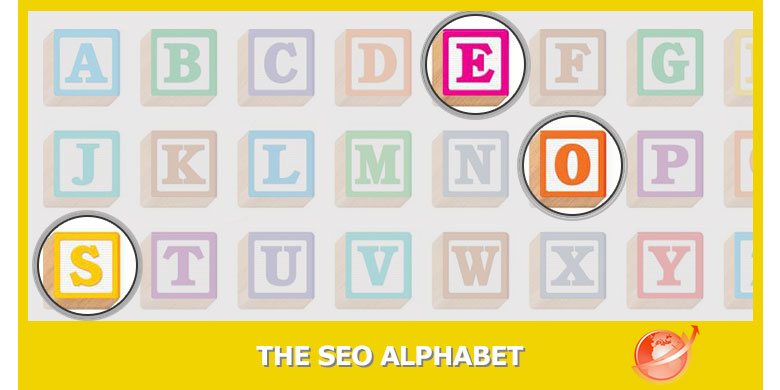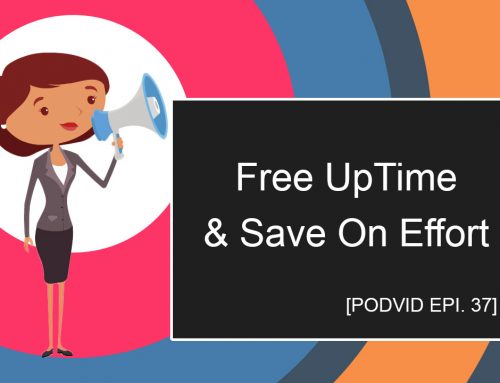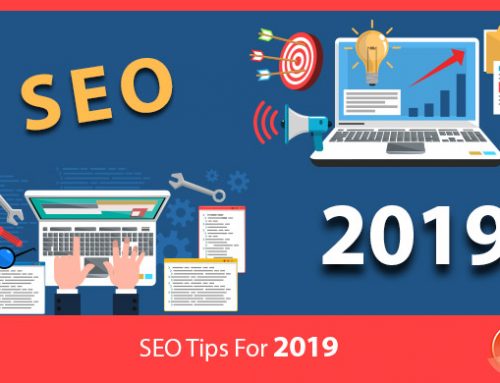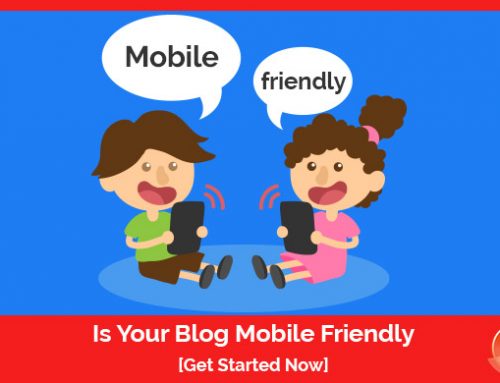SEO has changed so much in the past five years, and some believe it is dead thanks to Google’s new algorithm for rankings. This just isn’t true. While the old days of being able to provide paid rankings on the first page of Google are certainly over, the need to optimize has not changed. Here are some of the more pertinent A-Z’s you should know about SEO.
Aa is for Algorithm
Algorithms are used in the creation of so many things, to make the work of a computer easier by providing it with a map of how to get there. Google has taken this ten steps further by ensuring their algorithms have an element of true randomization so that nobody can now ‘guarantee’ first page results. They have over 200 different measures and factors to ensure this, and are constantly finding new ways to improve upon it. Since it’s nearly impossible to beat Google, it’s best to work with them, like using new tools like Google’s AdSense.
Bb is for Backlinks
Backlinks are any link out there which points to your website or takes you to it from another webpage. In the past, an SEO company could pay for old domains, and throw backlinks to their own sites on them to gain ranking. Today, that is no longer the case. Search engines use rankings for results, and they will consider the quality and the quantity of backlinks to your site when ranking it. What you should do is try to attract and use high quality backlinks from reputable sites with long histories to help with ranking. The best way to do this is through guest posting, offering a share-for-share option to the owner of the site where you will cross-promote them if they’ll do the same for you.
Cc is for Content
Content is possibly the biggest area of a website and one that frequently goes wrong. This is where users find value, and search engines try to match the search query with webpages that will give the person the very best set of results as precisely as possible. This is just as important as any other SEO metric because these search engines place large value on a site’s content when deciding on a ranking. For instance: It is better to publish articles over 1000 words. The closer you get to 2000 the better. You also want to ensure your content is valuable, informative and authoritative, as well as listing the references or citations of where the information was gained from.
Dd is for Duplicate Content
Don’t do it! If you’re going to copy someone else because you cannot imagine writing as wonderfully yourself, we can’t stop you. But we can warn you that posting the same content as others constitutes plagiarism and that is frowned upon by every search engine out there and can quickly result in you being de-indexed which means nobody will find you then. You want to ensure your content is unique, and the best way to do that is to write it yourself, hire a talented writer, or if you must borrow copy from another site who has a bigger budget – then change every bit of the wording so you’re not stealing the intellectual property of someone else.
Ee is for Evergreen Content
Having “Evergreen content” is content which is still relevant even long after it has been published. For instance, with few exceptions, math has not changed in terms of how to calculate something. If you were to publish a tutorial on how to work out a simple division problem with integers, it would still be viable ten years from now most likely, which would constitute “evergreen”. When trying to determine what would constitute an evergreen post or content, consider a few things: it cannot be influenced by current trends, or events, and it has a long life, and a lasting sense of value and appeal. Be sure to create evergreen content around keywords that relate to your industry or business to increase your visibility in searches and to attract natural backlinks to your site.
Ff is for Fresh Content
While you want some of your content to be evergreen, it cannot all be that way so keep the fresh stuff coming! Search engines love to see fresh, new and exciting posts being made. They love a busy site and will rank you far better for having one. This is especially true if you use content which is trending or viral in nature, breaking news etc. Search engines are only interested in giving people what they want, and if it’s hot right now, or in the news, you can be assured they’ll help people find you. If for instance, your business is affected by the stock market and you’re selling shares, and you read a breaking news article about the Stock Exchange having had a bomb threat, which affects trading and pricing – you’ll want to share that story.
Gg is for Google, Who Else?
It’s still difficult to become a Google Partner, but it’s not impossible and it’s great for your ranking. By becoming a Google Partner, you’ll ensure you’re always performing “best practices” and using clean marketing strategies. You also get a badge on your site which proves you’re partnered with Google to bring your clients the very best. If you’re unable to do this for whatever reason, at least make sure Google knows who you are by listing yourself in Google Places, and by using their AdSense or other Google services. The more Google knows about you, the happier they will be to share your stuff.
Hh is for HTML
HTML stands for Hyper Text Markup Language and it is the language which web pages use during creation. It is used for formatting and for ease of use within web pages and it also serves to tell search engine crawlers what the page is about. You’ll find HTML options everywhere from website creation, to your own email inbox! Sometimes an email will contain a lot of flash or photos, or other things which may not translate well and you can choose to view it in HTML or basic. If you’re not currently optimizing by using HTML to describe your site or to make it easy to crawl, then do it now!
Ii is for Indexing
Indexing was mentioned previously but as it’s counterpart: de-indexing. If de-indexing is losing the ability to be found on Google or other search sites, then indexing is the opposite. Indexing is the ability to be listed in a virtual yellow pages of sorts. Search engines will use crawlers to poke around in your web documents, and indexing refers to the crawlers information being processed. If you use Google’s Webmaster Tools you can see a section called “index status” which will show you how many pages Google is choosing to index for you, and you can then fix what they’re not indexing. They may not tell you why those parts don’t get indexed but that’s what analytics and metrics are for. If you know the general SEO rules which are mostly spelled out here… literally, then you should be able to figure out where you went wrong and fix it.
Jj is for JavaScript
JavaScript has had a bad rap in the SEO world. In times past, SEO professionals refused to use it much if at all because it prevented search engines from being able to index the content within the code. This is no longer completely true, because if JavaScript is used correctly it can now be read by search engines. We have come a LONG way! If you find JavaScript necessary for your site, or if your site designer only uses JavaScript, it’s fine today because you’ll still be crawled and indexed using it.
Kk is for Keywords
Doing keyword research is a long and troublesome task, but well worth it. The process is all about finding the words or phrases that a user might type into a search engine to find what they’re looking for. If you’re selling special tasteless toothpaste, you would want to find out every possible set of search terms which would be applicable to your niche. Keywords should always be related to your business or product, or the services you’re offering. It can also have to do with the content you have on your site. Using the previous example, your research might show you that for your toothpaste, you can use terms like, “tasteless toothpaste”, “taste-free toothpaste”, “flavorless toothpaste”, “unflavored toothpaste”, “plain toothpaste” and any other number of combinations and you can ensure that you plug in those keywords wherever you can to help people searching to find you.
Ll is for Long Tails
Long tails? In SEO? So what is a long tail keyword anyway? It’s a search query that contains three or more words, unlike the examples above. To use the same toothpaste example, a long tail keyword would be, “Brand X plain toothpaste” or “Does flavor free toothpaste work” or even “Unflavored toothpaste sale”. These types of keywords have lower search volumes, but they’re also the most commonly searched queries. People are used to typing in sentences and rarely will abbreviate something into two words or less to find it. Most sites will gain the majority of their traffic by using long tail keywords, so it’s important to research what they are, so you can incorporate them.
Mm is for Meta Tags
A meta tag is something that can appear on SERPs (search engine results pages) but they’re not able to be seen on the webpage itself. These would be things like title tags or meta descriptions. Consider when you use YouTube to upload a video. There is a section there during the upload which allows you to type in the description of the video, but also a place for tags so you can help people find your video based on what they’re looking for; whatever the category. People will see your video description but not your tags, those tags will simply aid them by pointing them in the right direction for all videos with that same tag in the same category. You can also think of it as those bits of information that you see when you find something on Google, just under the clickable link. If you haven’t provided it with a meta or title tag, then it will grab the first sentence or two and will cut it off at the character limit. Using these will help you be found faster, and rank better. Be sure to put your keywords in there!
Nn is for Nofollow
Nofollow is a command that tells a search engine not to follow any links on the page or to not follow a link in particular. The link would be unable then, to pass along authority to the page to help with rankings. If you have individual nofollows in links, it won’t help with your rankings, but if you have quite a few of them it helps your link profile look like it happened naturally and that will help your ranking.
This may sound bizarre and backwards, because no follow means not to follow, but in SEO it’s different. Say for instance, a place like BuzzFeed decides to share something you posted. You’ll get a nofollow contextual link which can pretty much guarantee you’ll get a huge amount of traffic and social shares just from that one link. Nofollows are a more indirect way of helping in rankings, but are just as powerful as direct shares.
Oo is for Over Optimizing
Yes there is such a thing as too much, and if you’ve been in the industry long you’ll know exactly what I mean by this. Have you come across a site with a wall of text, with little punctuation, and slammed full of nothing but keywords strung together? That is just one example, and the most extreme of them. Basically, over-optimization is when a webpage overindulges in keyword planting in their content, descriptions, tags etc. It can be done with backlinks also, which is an unnatural number of links which have optimized keywords in anchor text.
This is just as bad as copying content from someone else, and search engines hate it. They’ll penalize you or even ban you from appearing in future search results period. This means building an entirely new site, and perhaps even gaining a new name. Don’t get yourself blacklisted when creating your keywords in your content. Know when you’ve achieved the point of having just enough, but not too much. It should read through naturally, and not be obvious.
Pp is for Penalties
We’ve talked about a few of these already. Google will penalize people for over-optimizing, or for copying someone else’s content, or any other of their guidelines they find to be in violation. If you’re not sure what those are, you’d better find out fast before you publish your intended content. Sites which get penalized lose their ranking, and it can happen either automatically from the algorithm, or it is done manually by a Google Employee doing quality checks. Sometimes these penalties are passed down when Google updates their algorithm, other times Google may have found your site or been tipped off to your site by someone else, and they’ll issue manual penalties if they believe people are deliberately trying to manipulate search results to their benefit.
Qq is for Queries
A query is the search term, word, or phrase a person uses when trying to find something using a search engine. Keyword research will tell you many of the combinations of words or terms you can use to capture the people using those in their queries. You can do this all by using Google’s Analytics tools to find out which terms are being used when they found you.
Rr is for Rich Snippets
This one is less heard of but is decently powerful. A “rich snippet” is a way to enhance search results by using microdata to your site. Microdata is a formatting type which allows you to summarize your site or information; your content, which can then be helpful to search engines. Since few sites actually do this, it’s a good way to stand out from the rest and can easily increase the number of click-throughs you get.
Ss is for Social Media
Social media shares don’t have the same gravity they once did with search engines, but they do still provide some benefit. Having social shares is a big sign of an active and popular site, but you want to get there naturally, because you’re posting daily and you’re posting high quality information. Don’t buy your social shares or likes on social media when creating your page, you’ll get slammed for it not only by the social media site, but also by the search engines.
Tt is for Trust
Trust is currency in the SEO world. If you don’t have it, you have nothing. You can build trust however, much like building a house. You have to start with a great foundation, based on things already proven by others. If you continue to post things which are helpful, truthful and noble, then you’ll automatically gain trust from the public, which then becomes recognized by search engines. You want to do things which will help to build trust like adding history or information about your business, or business partners. You want to add your contact details in multiple ways as with contact us by: email, Facebook, Instagram, LinkedIn, or a phone number and physical address. These help to prove you’re a real and reputable business. You want to ensure you have a privacy policy which is easily found and clear, which will also help increase your trustworthiness.
Uu is for Umbrella Terms
Umbrella terms are broad and cover many things, instead of being narrow and focused. If you use too broad of terms or language, it can be harder to get ranked. It’s a fine balance between being too specific and being too general, vague or non-specific. For instance, using the toothpaste example as before, you would want to use terms for your product like toothpaste, or tooth care, you could even use something like “dental hygiene” but you would stay away from such broad terms like “health” or even “clean”. You can use those words, but try not to use them as your main topic, and get downright specific about what you’re talking about. By narrowing down your overall topic choice, you make it easier for people looking for your particular toothpaste to find you.
Vv is for Video
Video has grown into an absolute SEO monster and it’s singly the greatest way to help yourself gain rankings. It is 50 times easier to reach page 1 on Google by using a video than simply having a webpage. The same rules apply however to video that apply to content. Ensure that videos are optimized but not overly so with keywords, and use things like meta tags, descriptions and other tools to help rank the videos. You also want to make your videos closer to the 10 minute marker and no longer, or shoot for super short as with Vines. Both perform well in different markets, like Vines for Snapchat or Facebook, and longer tutorial style videos for your website or LinkedIn articles.
Ww is for Webmaster Tools
Google has Webmaster Tools that they allow you to use to manage your own SEO metrics. The tool is invaluable because it helps you to see your site the way Google does, and can show you how many of your pages are indexed, what links show the way to your site, and also your hottest keywords. It can tell you about all your crawling errors, duplicate content issues and any penalties your site has received. Staying on top of this allows you to make changes, correct errors or missteps, and give you real-time data you can use on the move.
Xx is for XML
XML sitemaps are used to help search engine crawlwers to navigate your site. It’s not that simple though, they don’t just help it to navigate, but it helps it to navigate by using a route that you have chosen. It can also give information on when a page is updated as well as its importance. Keep XML sitemaps updated to ensure you’re part of SEO best practices. If you’re still uncertain how to use it, try xmlfiles.
Yy is for Yoast
Yep, Yoast, not Toast. This might be one of the absolute, all-time, best and most popular of all the WordPress plugins. It allows you to set up page title and meta description templates for content, to verify your Google and Bing Webmaster Tools accounts, to create XML sitemaps, and more. WordPress offers tons of SEO plugins people can choose from which well help manage content optimization, it’s just a matter of picking the one most appropriate. In cases like Yoast, it would be hard to go wrong – if in doubt, choose ones which have the highest popularity rankings, that is a good sign that the developers keep up with it, and that it is quality.
Zz is for Zeitgeist
Google’s Zeitgeist translated directly is: the general intellectual, moral, and cultural climate of an era. Google’s use of the word is no different. They use it for an annual review that shows how the world has been using the search function for the past year. How does this relate to you? Well, it helps to know how other people are searching so you can cater to those changing needs. Google uses it, so should you! They learn from those results and to a smaller degree, you can as well.
If you stay on top of new trends, you’ll never risk falling behind!




![Do you know BERT? [Google SEO]](https://magiwebsa.com/wp-content/uploads/2019/11/podvid-epi35-cover-500x383.jpg)

